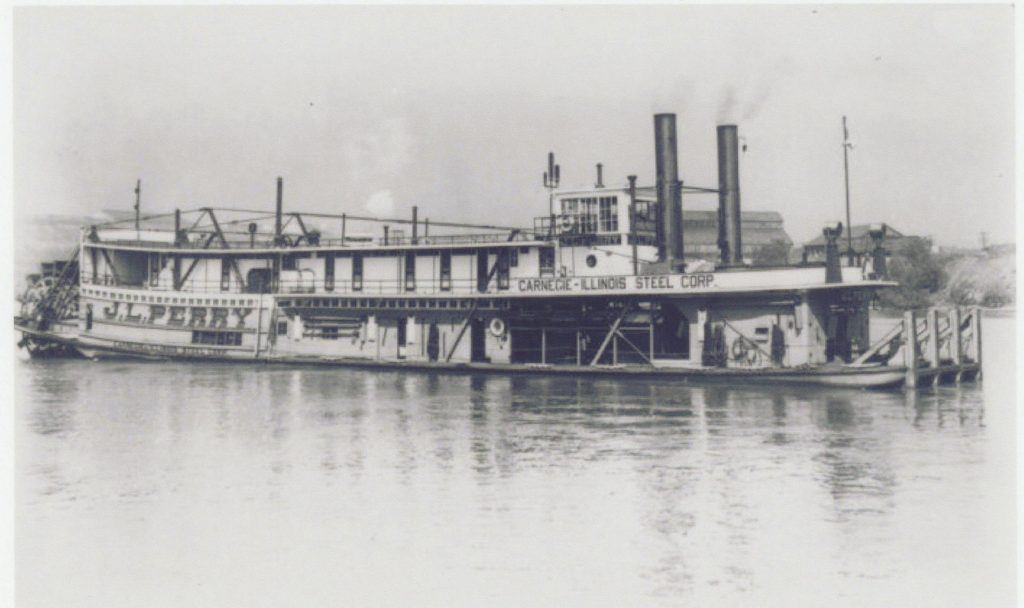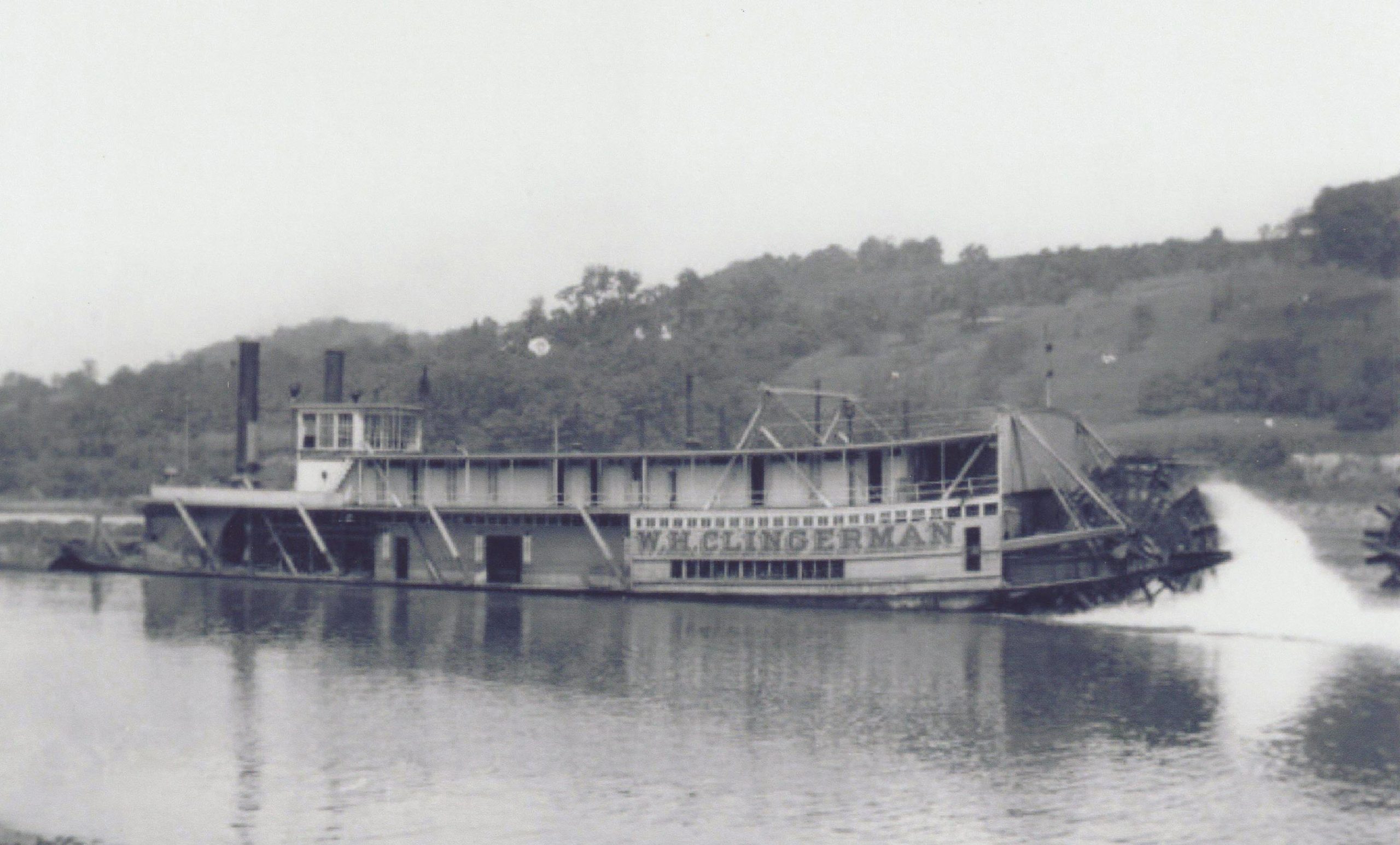This past week marked 70 years since the steam sternwheel towboat W.P. Snyder Jr. arrived at Marietta, Ohio, under its own power, blowing the whistle and billowing coal smoke from the stacks to become a floating exhibit at the Ohio River Museum, which is actually located on the left bank of the Muskingum River.
The boat was originally crafted at the shops of the James Rees and Sons Company of Pittsburgh. The company was first established as a machine shop and engine works called Rees & Thorn. Rees began building river craft in the late 1870s and turned out a wide range of vessels, including packets, towboats, snag boats and small tugs. In 1914, the company built a relatively small steamboat to be used as a ferry and day packet in the Memphis, Tenn., area. That boat is still in service today as the Belle of Louisville.
In 1918, Rees secured a contract to build two steam sternwheel towboats for Carnegie Steel Company of Pittsburgh. The first boat was named W.H. Clingerman and had a steel hull and lower cabin. The hull dimensions, according to the U.S. List of Merchant Vessels, were 152 feet by 29.1 feet with a depth of 4.8 feet. The boat was fitted with four coal burning boilers and a pair of Rees-built condensing engines that were 14’s, 28’s with a seven-foot stroke rated 750 hp. The engines turned a sternwheel that was 21 feet in diameter with buckets that had a 36-inch dip.
The Clingerman was named for the president of the H.C. Frick Coke Company and, according to Way’s Steam Towboat Directory, it made a maiden trip to Ambridge, Pa., and return to Pittsburgh on November 23, 1918. The second vessel of the order was a near-duplicate named Homestead that was launched on June 27, 1919. Way’s records that the first master of the Clingerman was Capt. A.O. Ackard, followed in 1919 by Capt. Cal Blazier. Blazier’s nickname was “Quaker Oats,” and a navigation light on the Lower Mississippi River near Wickliffe, Ky., was named in his honor.

The W.H. Clingerman was built as a pool-style towboat with the pilothouse set forward of the upper cabin. This arrangement allowed the boat to transit the low bridges found within the “pools” of the Pittsburgh area locks and dams. The boat regularly towed coal from the mines of the upper Monongahela River to the steel mills near Pittsburgh.
In August 1930, the crew of the Clingerman included Capt. H. Clayton Adams (master), Capt. George Long (pilot), William E. Herd (chief engineer), Charles Bottorf (second engineer) and George Kennedy (steward). In 1937, the 19-year-old vessel received an extensive rebuild that included a new hull that was wider and deeper. Following that work, the hull measured 151.7 feet by 32.3 feet with a depth of 5.7 feet.
In 1936, Carnegie-Illinois Steel (CIS) owned the Clingerman. CIS was a subsidiary of the United States Steel Company. In 1938, CIS renamed the boat J.L. Perry, and it remained in the same trade of delivering coal from the Mon River to the mills of U.S. Steel.
In the spring of 1945, the boat was again renamed, this time to, simply, A-1. At the same time, CIS changed the name of the Homestead to A-2.
The paint was hardly dry on the nameboards of the A-1 and A-2 when they were both sold in August 1945 to Crucible Fuel Company, a subsidiary of Pittsburgh-based Crucible Steel Company of America. The A-1 was renamed W.P. Snyder Jr., and the A-2 became the W.H. Colvin Jr. Crucible Steel was formed in 1900 by the merger of 13 companies, known as the “great consolidation of 1900.” That merger is credited as the impetus for J.P. Morgan to merge many other steel companies into his gigantic U.S. Steel.
In 1945, William Penn Snyder Jr., a major stockholder in Crucible, recognized that the company needed modernization. He convinced the board to bring in William H. Colvin Jr. as president to oversee the project. The Crucible mill at Midland, Pa., near Ohio River Mile 36 was enlarged with the addition of an $18 million ($323 million in today’s dollars) sheet and strip mill, and the two steamers now named after Snyder and Colvin were kept busy delivering coal to Midland for the next several years.
The next Old Boat Column will continue with the history of the W.P. Snyder Jr.
————
Featured photo caption: The W.H. Clingerman in its early years of operation. (Photo by Capt. Fred Way)



